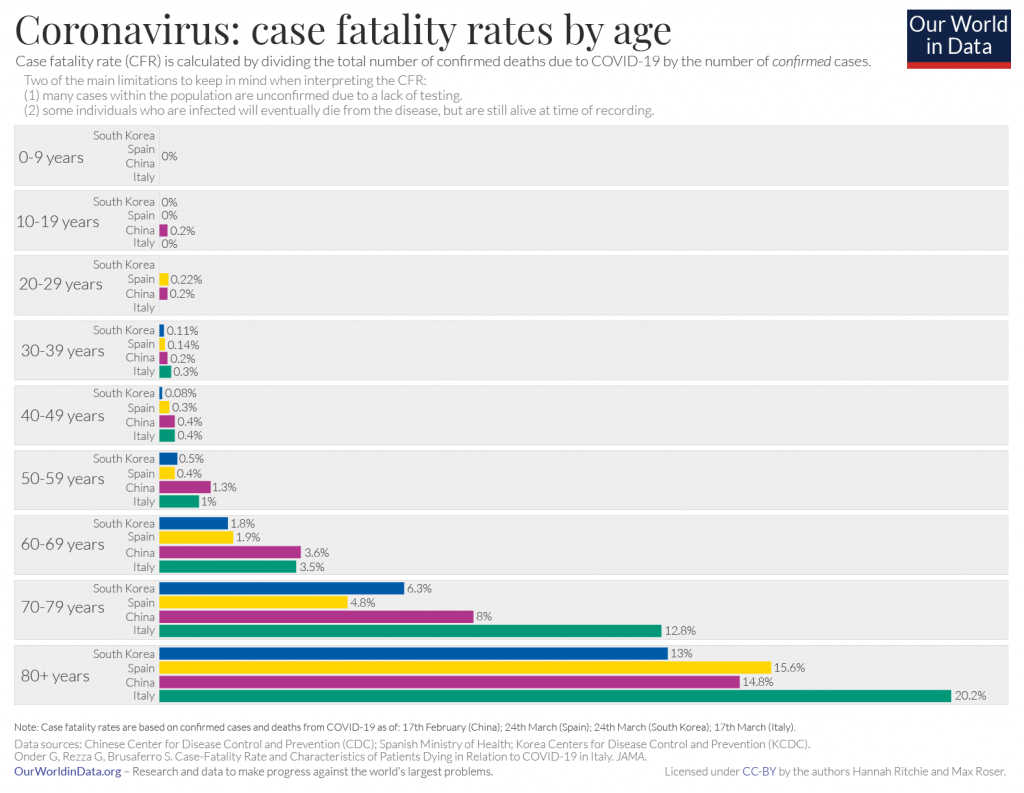
Digital Health in the Age of Coronavirus: How to Leverage Tech to Combat COVID-19
Oliver Lignell, Vice President, Virtual Health, AVIA
Insights
Guy Cohen, Manager, Client Engagement, AVIA

Around the world, COVID-19 social restrictions are being gradually lifted, and the US is no different. Until there’s an effective, widely available vaccine, health systems and residents are anticipating and planning for the next COVID-19 outbreak, which is particularly concerning for older populations.
We don’t know when there will be a vaccine. What we do know is indicated in the graph below: COVID-19 poses a greater risk to the older population. Most health systems across the country now understand digital tools are essential to effectively manage COVID-19 outbreaks. For health systems treating older populations, digital will play an outsized role in caring and increasing safety for this vulnerable demographic.

COVID-19 fatality rates by age group and country indicate older adults are at much greater risk for mortality when diagnosed with COVID-19.
Given that age is a significant factor influencing COVID-19 fatality rate, a thoughtful approach is required to address specific needs of elderly community members and improve their care. Some containment strategies will still be in place (e.g., increased COVID-19 testing, quarantine/isolation, limited gathering size) in the near future. A push for a universal testing strategy is happening in nursing homes and other long-term care facilities in PA, for example. It’s safe to assume that the elderly population will be disproportionately affected by these guidelines. Therefore, health systems serving communities with a higher median age are more likely to face longer stay-at-home periods and stricter social distancing. These health systems may need to employ different care models, using appropriate digital tools, to best care for their communities.
To support elderly populations, health systems can target and create a Remote Patient Journey and address social needs resulting from practicing social isolation, such as anxiety and depression. And since sometimes a visit to a healthcare facility is inevitable, health systems can update workflows to enable a reduced-exposure patient journey. The key is to meet virtually with patients wherever they are, using their preferred method of communication.
To best care for this population, whether they are staying at home or in isolation rooms within healthcare facilities, health systems can employ a multi-pronged digital strategy that includes the following key capabilities:
Underlining all these capabilities is digital communication. Digital communication can be intuitive, easy to use, and welcoming. Examples include instant text messaging and on-demand services, such as ride-hailing or entertainment streaming. Digital communication can also get clunky and burdensome when it involves multiple registration stages, is limited to specific devices, browsers, or apps, or requires prior authorization.
To increase stickiness, digital communication should be easy to use. Consider the following suggestions to increase engagement with an older population:
Employing multi-channel virtual visits is particularly critical when supporting a population that might not be tech-savvy or have access to broadband Internet or the latest smartphone. It enables both the clinician and the patient to switch platforms for technical issues or due to preference. If video visits are not working for some people in this population, phone call, chat, or instant text messaging are readily available as alternate options. Providers can also resort to asynchronous solutions, such as email.
Virtually meeting your patients wherever they are not only ensures that they get the care they need in the format they prefer, it also shows them that you are tuned into their needs, reinforcing your relationship with them as their trusted partner.
Contact us to optimize your own virtual strategy to care for your local population, based on digital tools proven across the country.
More Resources for Your COVID-19 Response
For more information on leveraging digital to combat COVID-19, explore our COVID-19 Digital Resource Hub on AVIA Connect or contact us at contact@avia.health.